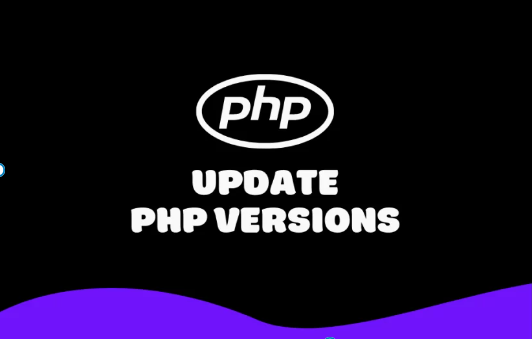What is PHP

PHP (Hypertext Preprocessor) is a popular open-source server-side scripting language designed specifically for web development. It is widely used to create dynamic and interactive web pages and applications.
Table of Contents
What is the reason to Updating your PHP version

1. Security
Older versions of PHP no longer receive security updates, leaving your website vulnerable to potential exploits and attacks. Upgrading ensures that you have the latest security patches and improvements, keeping your site safe from known vulnerabilities.
2. Performance
Newer versions of PHP are optimized for better performance. They can handle more requests per second and execute scripts faster, leading to improved website speed and efficiency. This can significantly enhance user experience and reduce server load.
3. Compatibility
Modern PHP versions support the latest web technologies and standards. Updating ensures compatibility with new plugins, themes, and other software components. It also helps avoid deprecated functions and features that are no longer supported.
4. Bug Fixes
Each PHP update comes with a range of bug fixes. Using an outdated version may result in encountering bugs that have already been resolved in newer releases. Keeping PHP updated helps maintain a more stable and reliable website.
5. New Features
New versions of PHP introduce new features and functionalities that can make development easier and more efficient. These can include new syntax, improved error handling, and additional libraries that enhance the capabilities of your website.
6. Compliance
Using an up-to-date version of PHP can help in meeting compliance requirements for certain industries, especially those with strict security standards. Ensuring your software stack is current can be a part of maintaining compliance.
7. Community Support
The PHP community continually evolves, and support for older versions eventually wanes. Upgrading ensures you have access to a robust support network, including documentation, forums, and professional assistance for the latest versions.
How to Update
- Backup Your Website: Always back up your website before making any major changes.
- Check Compatibility: Ensure your website, themes, and plugins are compatible with the new PHP version.
- Update in a Staging Environment: Test the update in a staging environment before applying it to your live site.
- Update PHP: Follow your hosting provider’s instructions for updating PHP.
- Test Thoroughly: After updating, thoroughly test your website to ensure everything is functioning correctly.
By keeping your PHP version up to date, you ensure your website remains secure, fast, and compatible with the latest web technologies.
